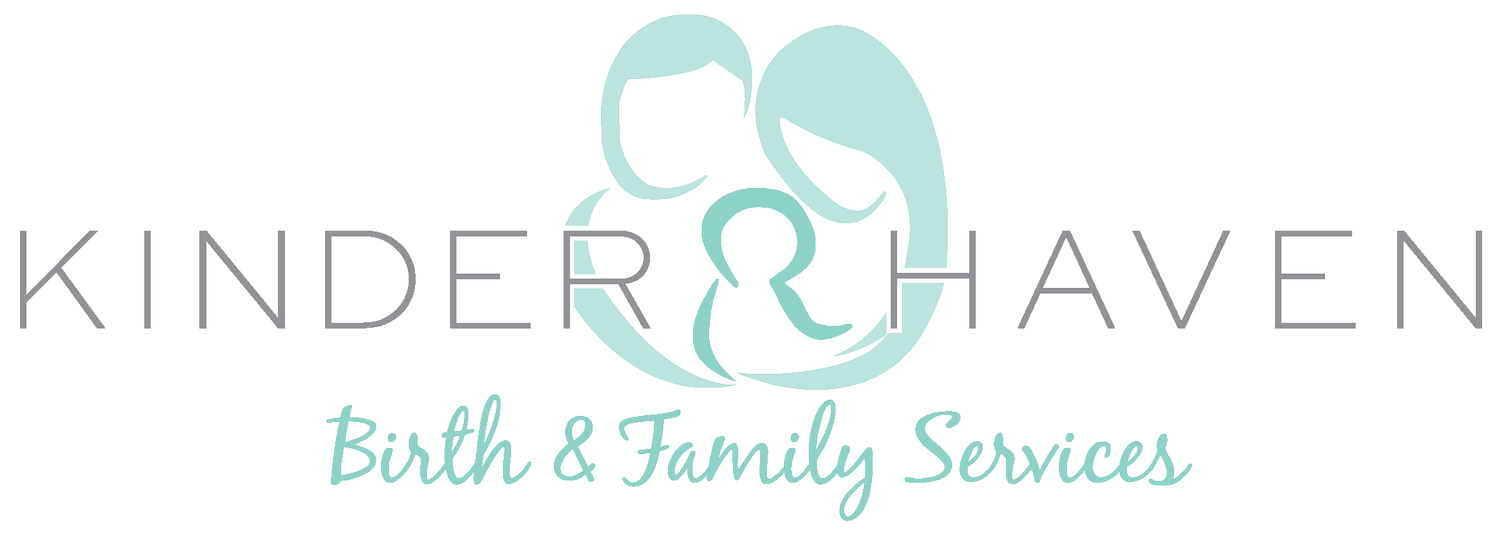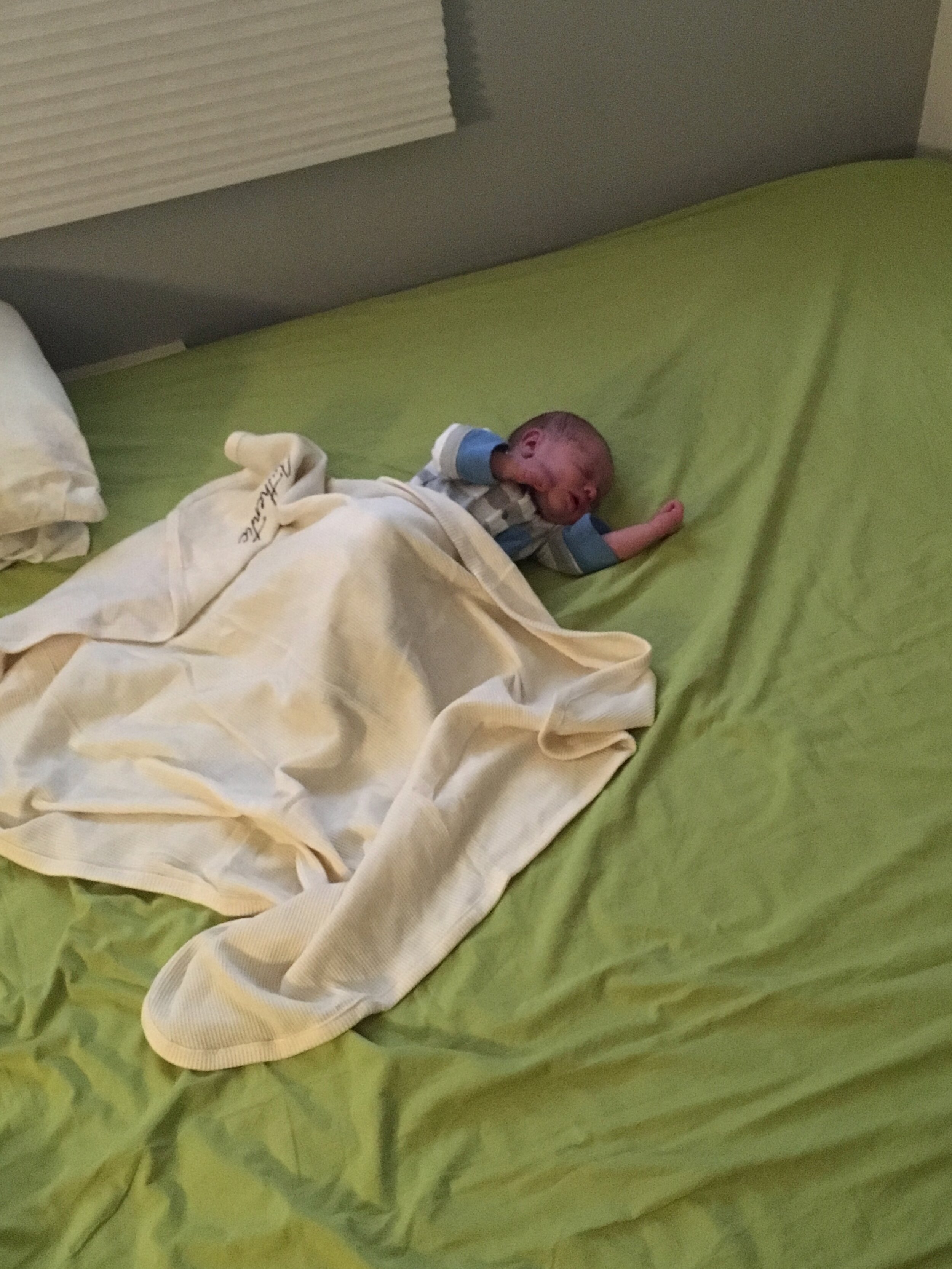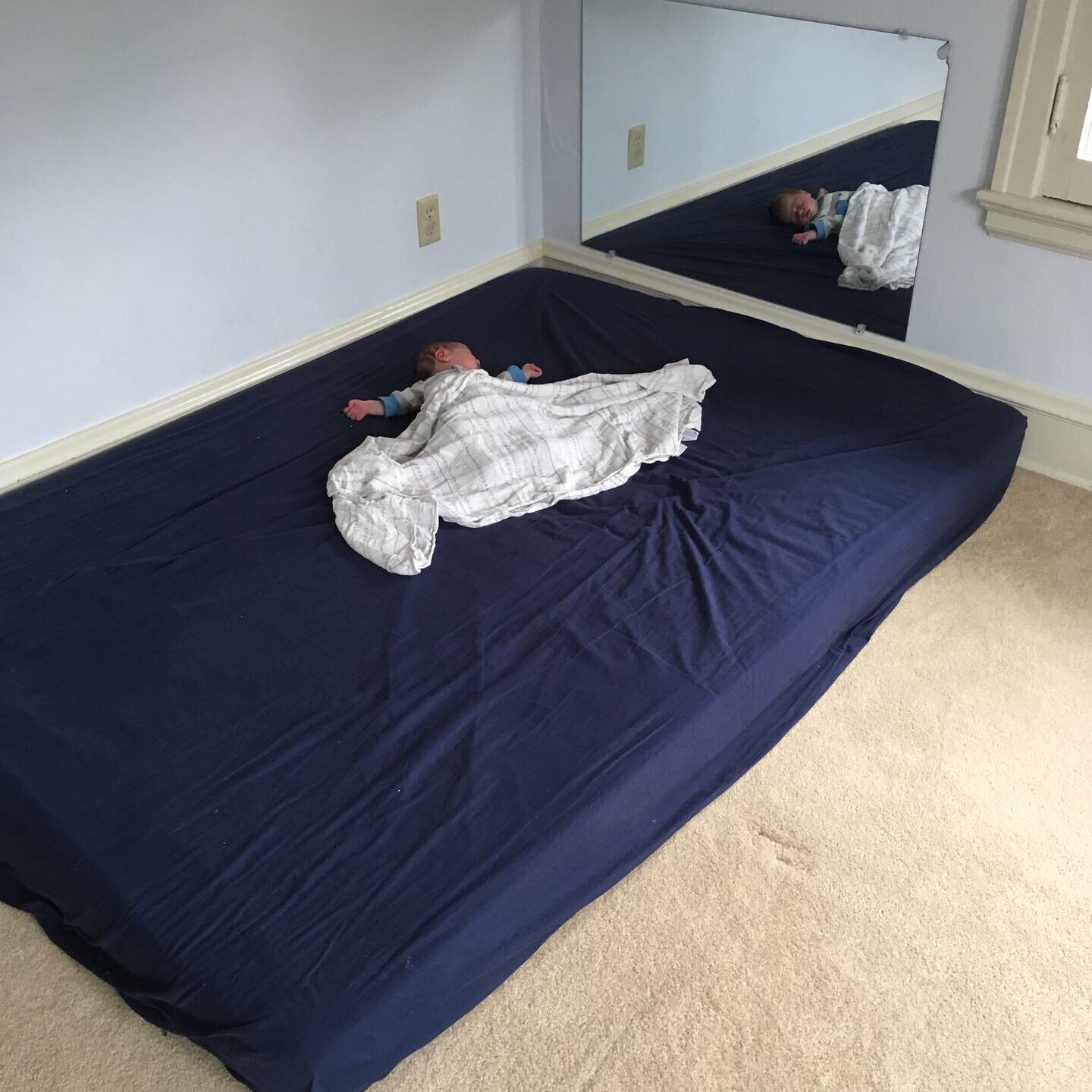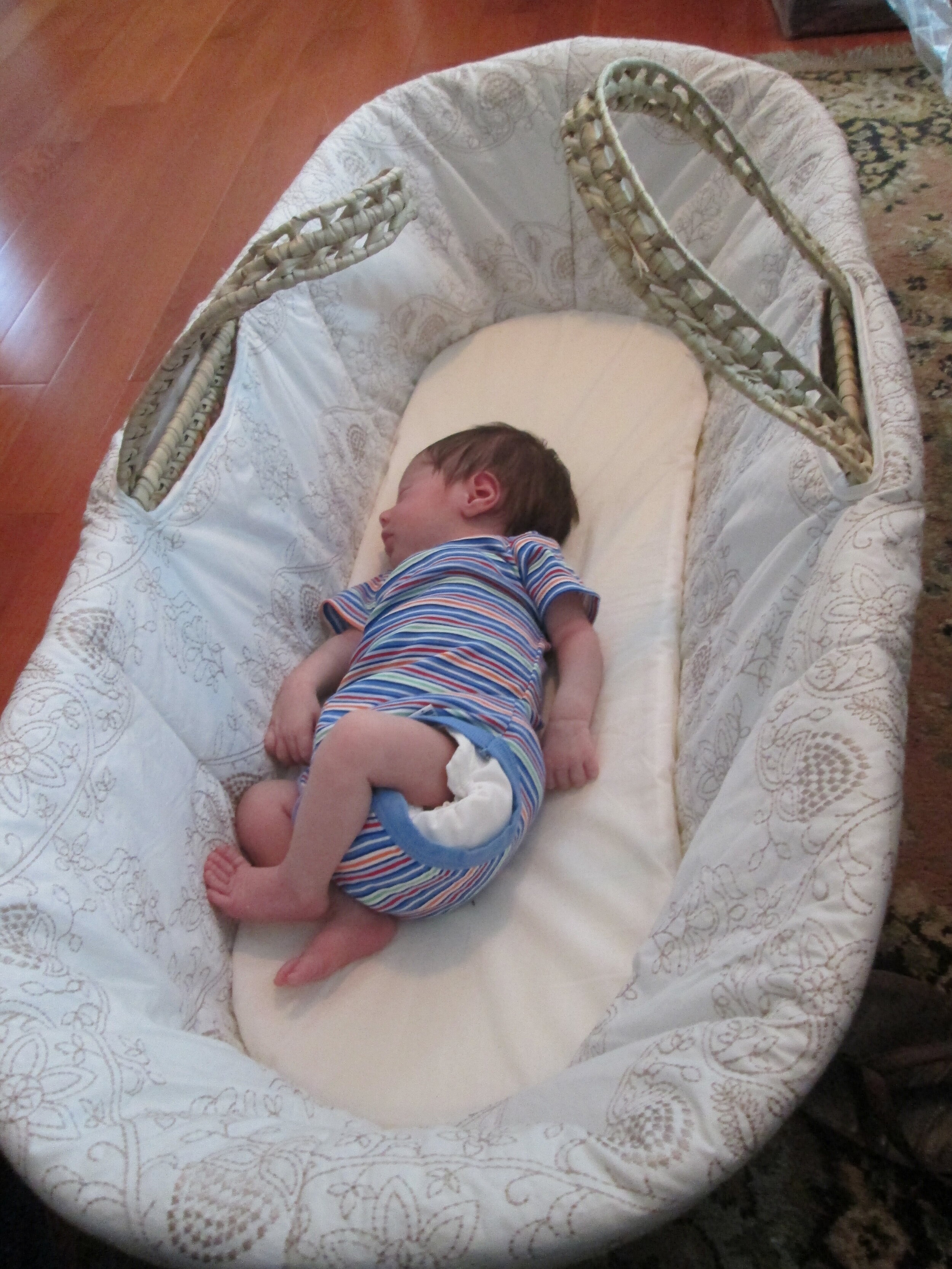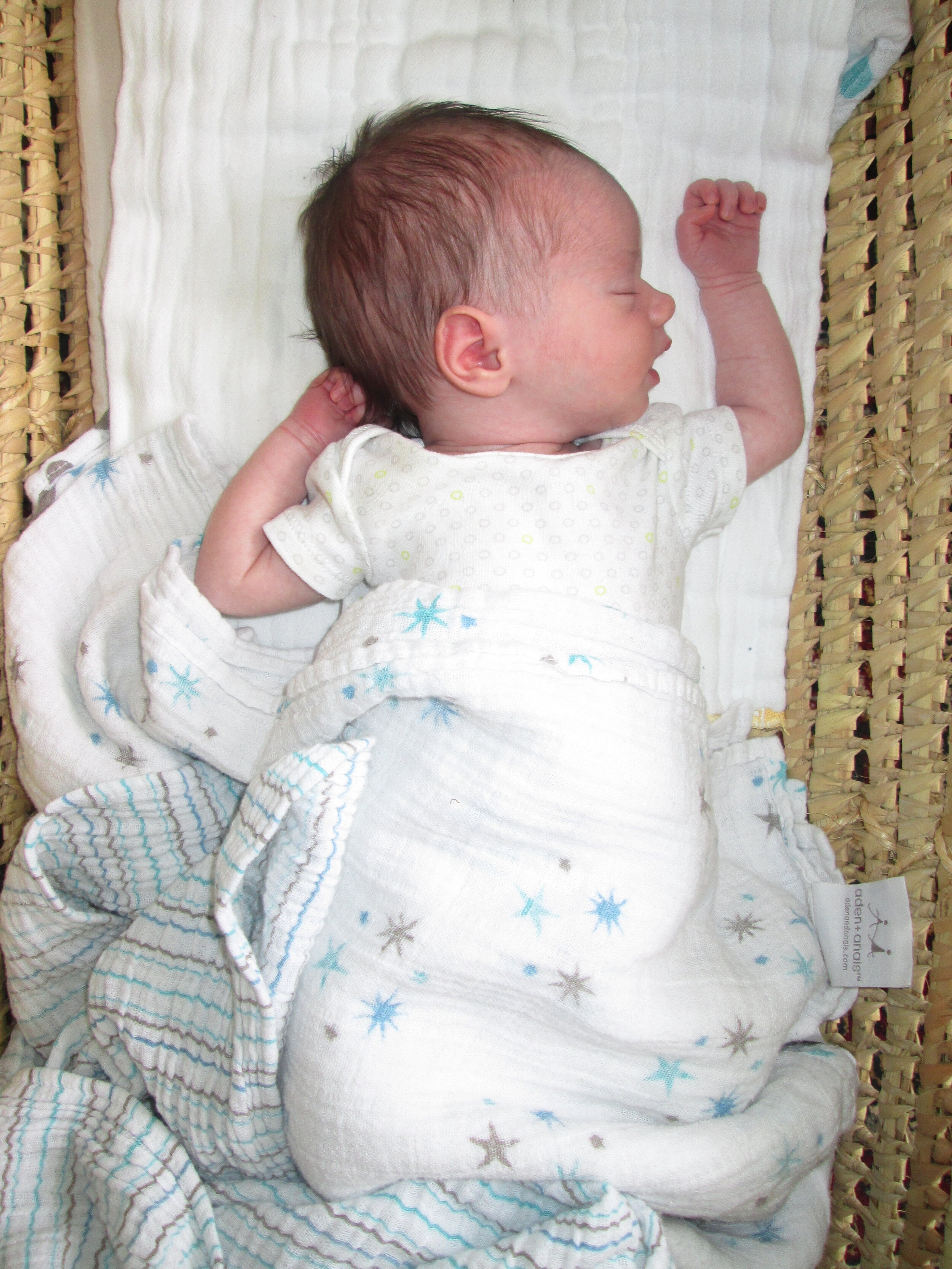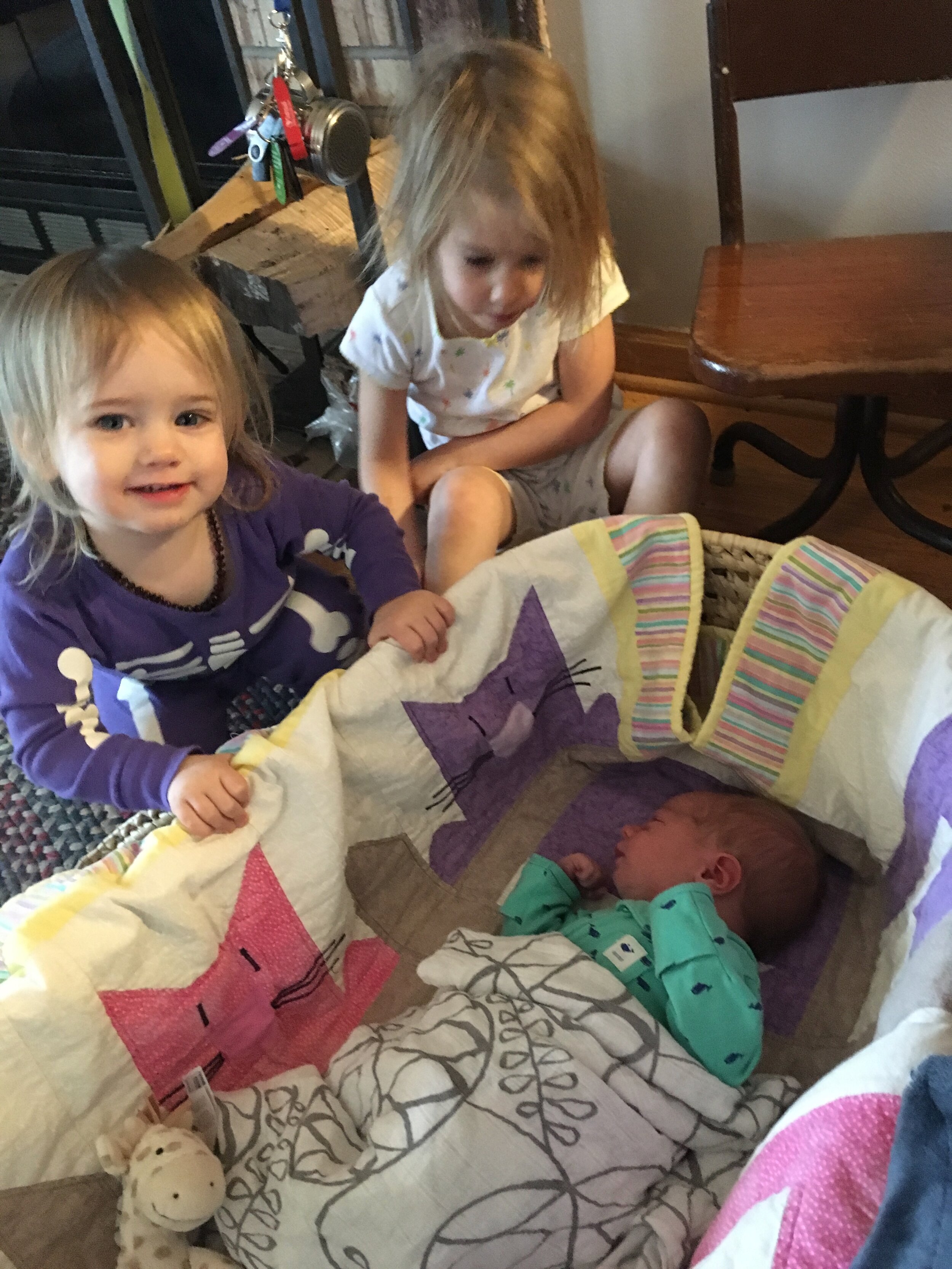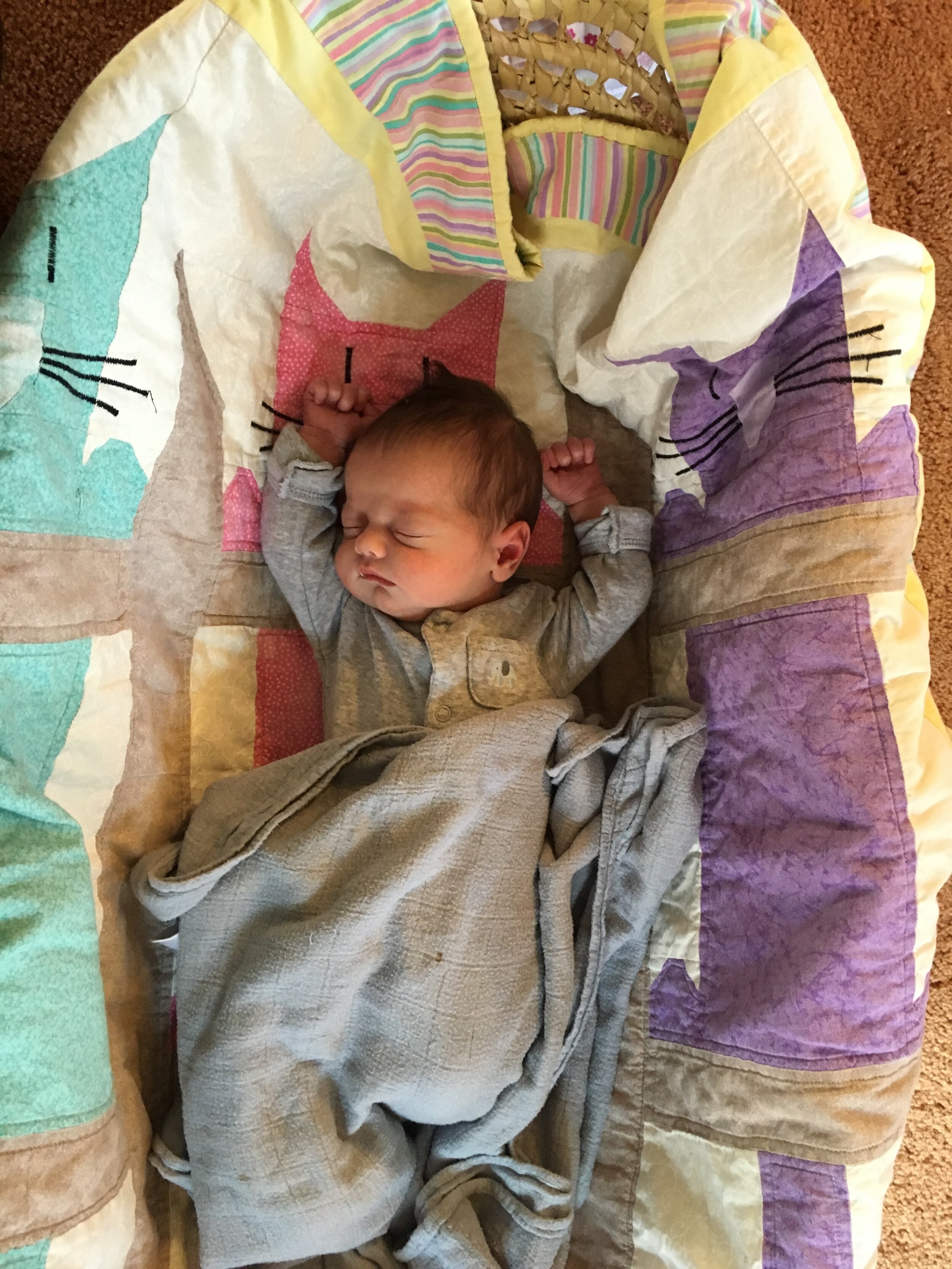I’ve been reflecting a lot lately on what the most important, helpful, valuable things have been for me over the course of raising four children. Starting over with a fresh newborn, six years later has reminded me of what some of my favorite items and habits are. These types of things are deeply rooted in my minimalist, Montessori and RIE-centered parenting beliefs and methods, and they spark most of the questions I get from other parents. I’ll be sharing some details about how and why we implement these things in this series.
Our oldest child as a newborn, sleeping on her floor bed
One of the most radical choices we’ve made right from the beginning is to use a floor bed rather than a crib. As an AMI trained Montessorian, I knew I’d use a floor bed before I ever had children. When we were preparing a bedroom for our first child, the main purchase we made was a full size Ikea mattress.
What to Buy and Why?
There are lots of different ways to approach the floor bed concept, from different sizes, to frame vs no frame, to where you place them. I chose a full size bed for a number of reasons. First of all, one of my parenting mottos is “start as you’d like to continue”. Transitions are difficult for children, not to mention it’s expensive to buy a series of items rather than one long-lasting one.
Many parents buy a bassinet, crib, toddler bed, twin bed and maybe eventually a larger bed. The transition from one to another is often difficult for young children and can affect their sleep habits. Buying a full size mattress from the beginning not only keeps things consistent - a child can sleep on the same bed from birth through adulthood, maintaining continuity and comfortability - but cuts out all those extra purchases.
A larger mattress also meant that our babies were very unlikely to roll off at a young age because there was plenty of room. Another bonus: it’s easy for us parents to join her in bed for things like nighttime nursing, reading books before bed, or snuggling when they’re sick. The floor bed is great fun for playing as well - you can use it like a trampoline, a practice mat for somersaults and cartwheels, or just overall rambunctious kid play. It even doubles as an extra guest sleeping option when we have family in town (can’t really stick the grandparents in a crib!)
The mattress we chose is 2.75” high, so even if a baby does roll off, it’s so close to the ground there’s no danger. We mostly have put our mattresses on carpets, but even when we have used them on wood floors we haven’t had any issues. Adding a rug is an option if you’re worried about hard or cold flooring.
Some people do prefer to use a frame of some sort for their floor beds. We’ve never found this necessary - we flip the mattress from time to time, but over six and a half years of constant use, we’ve never encountered issues like mold.
Napping on the floor bed as a newborn (we only use blankets while supervised!)
In addition to the mattress itself, we purchased a set of waterproof mattress pads (totally essential, worth their weight in gold) and a set of fitted sheets. Yes, we’re still using the same ones we bought initially, and we’ll be able to continue to use them for any of the full size beds in our home for a long time. Definitely a major money saver!
Our third child sleeping on the floor bed at a few months old
We don’t just use a floor bed to save money and avoid transitions though! The main reason is because we believe in the inherent capability of our children from birth. Why cage them off from the rest of their room and home? Why make them dependent on an adult to put them in and get them out of bed? The floor bed allows the child to have ownership over their sleep experience from the beginning. If they’re not quite tired yet, they have the freedom to do other things before going to sleep; if they awake and they’re content, they can choose to play on their own rather than crying for someone to rescue them.
Making the Room Safe
Cribs are mostly designed to keep the baby safe - but if the whole room is safe, then there’s no reason to have bars. Cribs provide hazards of their own - babies can get their limbs stuck in the slats, if bumpers are used they can cause suffocation, and eventually most babies start to climb out of cribs, potentially leading to falls. A floor bed removes all these risks, as well as eliminating the need for the parents to pay attention to things like changing the settings of the crib to lower it as the baby start to sit and stand and climb.
Current room setup for our 4 week old
In order to make the baby’s room safe for a floor bed, a minimal approach is necessary. In the many iterations of “baby room” we’ve had over four children and three houses, we’ve kept things pretty simple: the floor mattress, a rocker/glider, and a dresser/shelving unit that stores clothing and other baby items and doubles as a changing station. Sometimes we’ve also had a small shelf of toys in the room, though lately we keep the toys in the living room and play areas and out of the bedrooms.
The key for large pieces of furniture is to anchor them safely to the wall. Some children will explore their rooms more - though when they’re used to being free in their room from birth, this is less likely since it’s all very normal and boring to them rather than new and exciting. Anything you don’t want baby to play with or touch should be kept outside the room, or in a closet or higher shelf.
The only other furniture in the room
Everyone will have different approaches to babyproofing their babies’ rooms based on the unique challenges of your home. We’ve had success with plugging any cords into outlets behind furniture - the only electronic we use is a video camera mounted on the wall, and we’ve never had issues with babies playing with the cords since they’re tucked behind furniture out of reach. There are outlet covers that can be used if this isn’t an option as well.
Floor Bed with a Newborn
Our fourth baby napping in her bed as a newborn
Many people transition their child to a floor bed at an older age, but I’m a big believer in using them from birth. I’ll share the process that has worked well for us over the years. All four of our kids have slept in their floor beds right away.
For the first 4-6 weeks, when the baby is very unpredictable and needing frequent feeds and changes at night, I have bedshared with my babies. It’s easy to follow safe bedsharing guidelines when it’s the child’s room rather than your own bed. I bring a blanket and pillow that I keep on my side of the bed, and baby sleeps on the other side, a good few feet away from me. I keep the blanket below my chest which is well below baby’s feet. It’s easy to respond when baby needs to feed at night, I’m right there near the changing area for changes and everyone’s able to sleep safely and comfortably.
Once I have a decent idea of baby’s nighttime routine, I transition myself out of the room. Our bedrooms are all nearby so it’s easy to hear when baby wakes at night - I don’t even use the sound on our monitors since they’re nearby. I can check on the baby via the video if I’m not sure whether they’re really awake or not. Once I’ve decided we’re ready to separate, I continue with the same routine - get baby into pajamas, feed and put to bed - but rather than going to bed there, I move back to my own room. When baby wakes at night, I go in to feed and care for them as needed, then return to my room in between wakeups.
Sleep sacks, not swaddles
I’m sure this looks different for everyone - some families may prefer to skip the bedsharing phase entirely, and others may keep it up for much longer. This is just how things have ended up working with all four of my kids!
In following RIE principles (as well as AAP guidelines) we always put our babies to sleep on their backs, flat on the firm mattress with only a fitted sheet. If it’s chilly, we use a basic cotton or fleece sleep sack over pajamas, but we do not use swaddles or blankets of any kind. Freedom of movement is so important for babies, and swaddles not only inhibit the free movement of their limbs, but keep them from using their hands to soothe themselves. All my babies have enjoyed sleeping with their hands near their faces or up in the air by their heads. Skipping swaddles helps avoid another difficult transition, since they have to be discontinued once baby starts to roll.
Naps Outside the Bedroom
In addition to the floor bed, we do also own a Moses basket. We keep this on the main floor of our home, and sometimes take it elsewhere - to the basement, backyard, etc - if the baby needs somewhere to sleep or hang out when we’re not near their bedroom. In the first few weeks, my babies have slept easily anywhere in the house, but as they move away from the sleepy newborn phase, they tend to sleep better in their own rooms away from the hubbub of the rest of the household, so I do put them down for naps in their room if possible. Eventually they’ve all transitioned to napping primarily in their rooms, usually within a few months.
Starting right away from birth with a familiar, consistent sleep surface, calm and minimal routine, and trust in the inherent capability of the infant to sleep has been so valuable for our family. These techniques won’t make them magic sleepers or keep them from waking at night - that’s developmentally normal for babies! - but they can go a long way to helping babies sleep as well as they are able and avoiding habits that are unsustainable.
If you’re interested in learning more about floor beds, here’s some related resources. I’m always happy to answer questions you may have, so send them my way!
